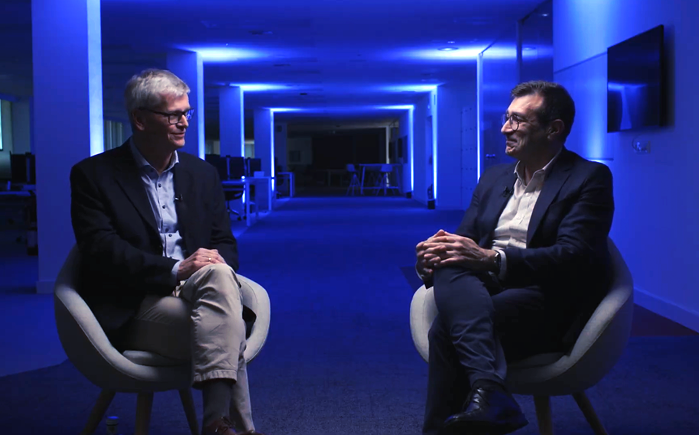In today’s fast-moving, digital-first world, organisations increasingly need frameworks that link business strategy with real-world technology capabilities. One of the most widely adopted approaches to achieve this is Enterprise Architecture (EA).
By 2016, 60% of Fortune 500 companies had already implemented frameworks such as TOGAF, and 74% of Enterprise Architecture departments were making a direct impact on their organisations. Demand for EA continues to grow at around 17% annually, demonstrating that it is far from a passing trend.
While the maturity of EA implementation varies, most large organisations have already begun this journey, even if only informally. Today, it is hard to imagine a technology function where Enterprise Architecture is not part of the conversation.
What is Enterprise Architecture?
Before exploring the benefits, it is worth clarifying what we mean by Enterprise Architecture. There is no single, universally accepted definition, but a variety of frameworks and reference models help explain the concept.
Uno de los orígenes más influyentes lo encontramos en 1987, cuando John A. Zachman publicó el artículo “A Framework for Information System Architecture” en la revista IBM Systems Journal. En él, Zachman planteaba una idea que hoy sigue vigente: no deberíamos construir software sin una estructura previa, del mismo modo que no se diseña un edificio o un avión sin planos. Esa estructura previa es precisamente lo que él denominaba “arquitectura”.
One of the earliest and most influential contributions came from John A. Zachman in 1987, when he published “A Framework for Information System Architecture” in the IBM Systems Journal. Zachman argued that software should not be built without a structured framework—just as buildings or aircraft are not designed without blueprints. This structured framework is what he called “architecture.”
Since then, the concept has evolved into comprehensive models that guide how organisations plan and manage their technological evolution. TOGAF (The Open Group Architecture Framework) is one of the most widely used, defining EA as:
“The practice of analysing, designing, planning and implementing enterprise analysis within an organisation, taking a holistic approach to enable the effective development and execution of strategy.”
Similarly, ISO/IEC/IEEE 42010:2011, which focuses on system architectures, states:
“The architecture of an enterprise describes the fundamental principles and models that guide its design and evolution over time.”
In short, Enterprise Architecture is a discipline that aligns strategy and technology through a structured representation of an organisation’s core components—processes, data, applications and technology—and their interconnections.
This approach not only clarifies complex systems but also supports informed decision-making, improves operational efficiency and helps organisations navigate digital transformation with confidence.
Key Objectives of Enterprise Architecture
Aligning Business and Technology Strategy
The primary goal of EA is to ensure that technology decisions support the organisation’s strategic vision. This top-down approach guarantees coherence between business objectives and IT investments.
EA also enables a bottom-up perspective: by understanding the current state of technology capabilities—including obsolescence, resilience and asset management—organisations can anticipate their impact on strategic goals.
Supporting Strategic Decision-Making
A complete, up-to-date map of assets and relationships enables organisations to plan technological evolution with clarity.
By comparing the current state (AS-IS) with the desired future state (TO-BE) and conducting gap analyses, EA produces realistic roadmaps that align with business priorities, helping to prioritise investments and plan system development.
Creating a Shared Vision
Alignment requires that all parts of the organisation—from executives to technical teams—share a common understanding of the technological and business landscape.
Modelling objectives, processes, applications and systems creates a common language for all stakeholders, reducing friction and speeding up decision-making.
Key Benefits of Enterprise Architecture
The benefits of Enterprise Architecture are based on the agility it brings to decision-making, supported by a catalogue of elements that accurately represent the organisation’s reality. Thus, some of the key benefits of Enterprise Architecture include:
Greater Operational Efficiency
Enterprise Architecture enables the identification of duplicated, underused, or non-value-adding assets, facilitating the optimisation of processes.
This approach reduces time, costs and errors in technological evolution, generating tangible improvements in productivity.
Reduction of Organisational Complexity
By mapping technologies, roles and processes, it provides a clear picture of the organisation’s ecosystem, improving coordination between different areas.
In addition, it helps identify and document information or system silos, enhancing their integration. This prevents duplication, shadow IT models and misunderstandings about what actually exists within the organisation.
Catalyst for Digital Transformation
Having a living catalogue of assets and relationships makes it possible to identify which capabilities are required, which need replacing, and which should be optimised.
This results in digital transformation plans that are faster, more accurate and better aligned with business objectives.
A Growing Discipline
Enterprise Architecture is no longer a niche practice. It is a strategic tool for better decision-making, faster transformation and sustainable value creation.
In a rapidly changing environment, a clear, structured and shared view of the technology ecosystem is not just helpful—it is essential.




